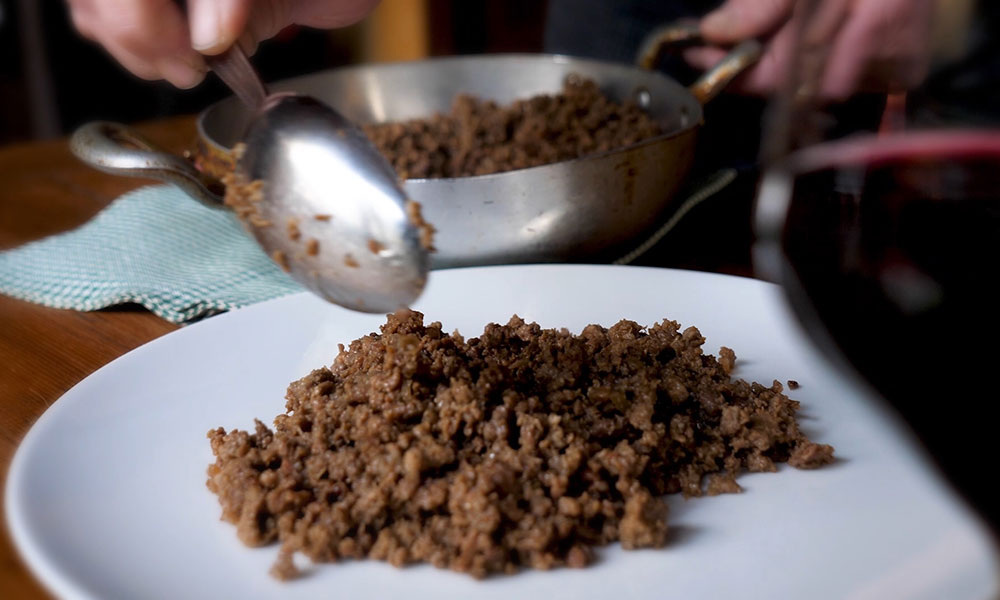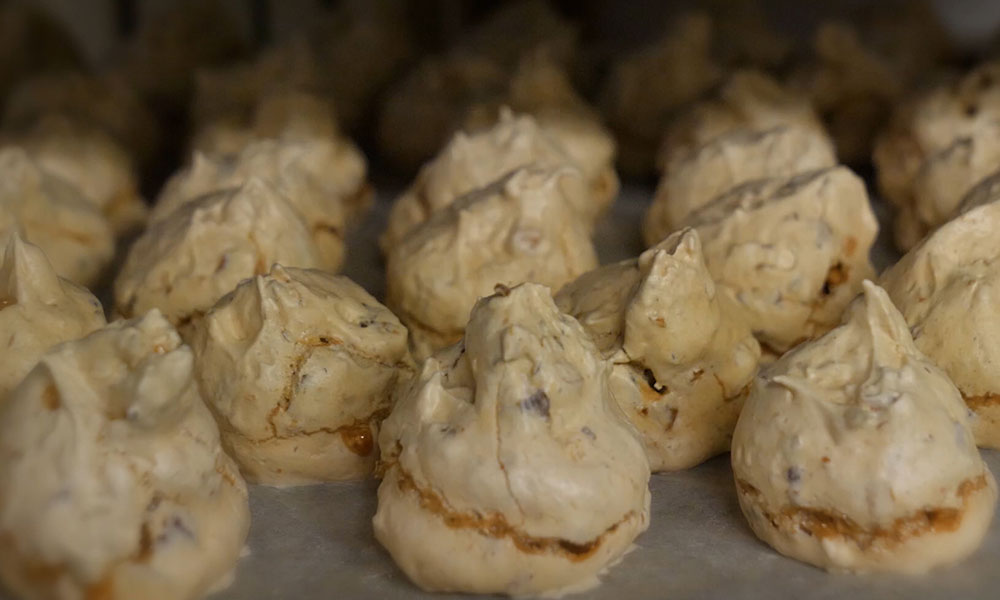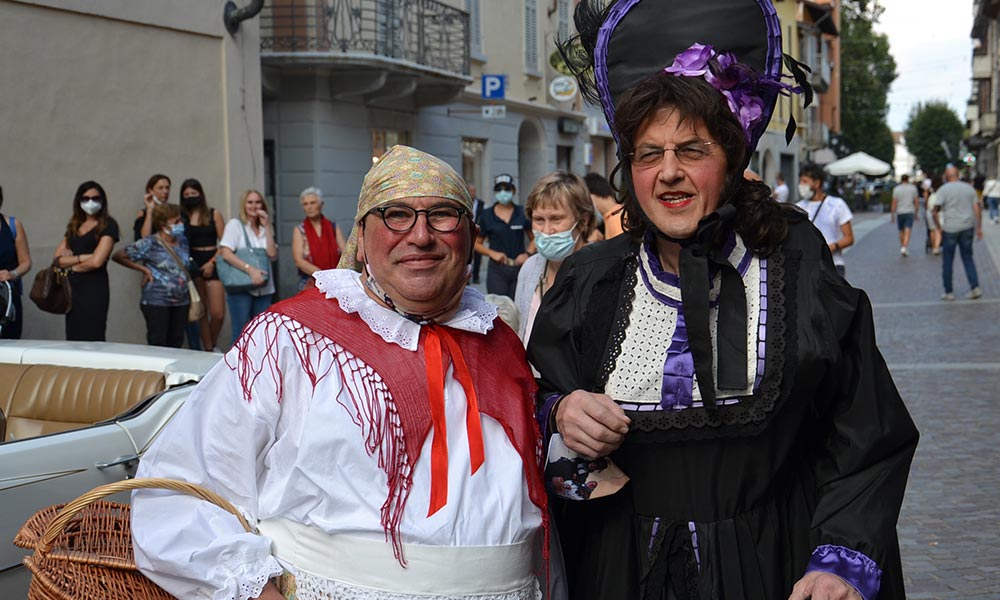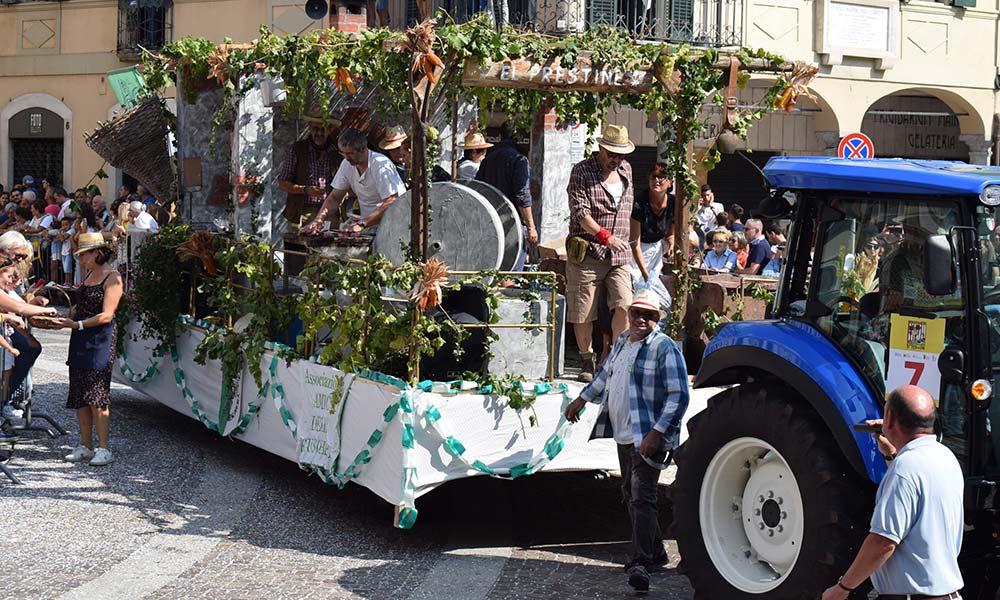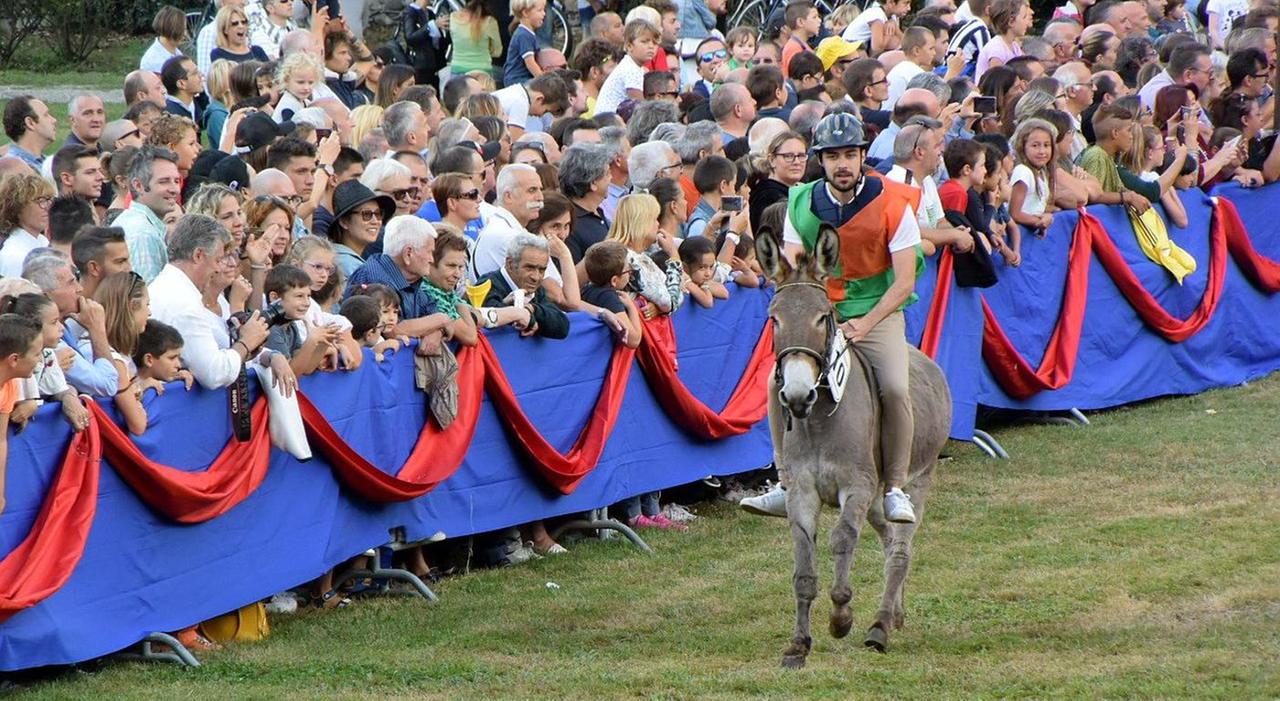Era stata a ridestarli l’aria fresca e sottile che vi rifluisce dal Monte Rosa e che, da tempo immemorabile, vi fa prosperare quella che usa chiamarsi industria alimentare.
Senonché i “nostri”, presi dal sacro fervore del pio pellegrinaggio, avevano dimenticato di rinnovare le provviste, e le bisacce cadevano desolatamente vuote sul dorso dell’asinello che li aveva seguiti nel lungo cammino. E poiché questo rosicchiava in quel momento con evidente soddisfazione un cardo offertosi alla sua onesta fame, fu suggerito da qualcuno che con uguale soddisfazione lo stesso asinello avrebbe potuto essere rosicchiato dagli affamati padroni, i quali, senza attendere oltre, si diedero a farne braciole. Pare tuttavia che queste rivelassero insospettata durezza, talché fu d’uopo ridurle in minuti frammenti e tenerne la pentola lungamente al fuoco.
Sortì una vivanda che i “tredici”, giudicarono eccellente, e che li dispose siffattamente all’ottimismo da indurli a non riprendere il viaggio e a stabilirsi in un luogo che loro sembrò rivelato da San Giulio in persona. Il villaggio che ne nacque, è, col passare dei secoli divenuto città, e i suoi abitanti hanno da gran tempo dimenticato gli usi dei lontanissimi fondatori: non già però la vivanda che è forse all’origine della loro fortuna. E, sostituita con tenera carne di manzo finemente tritata quella bonaria dell’asino della storia, la gettano su un soffritto d’olio e burro profumato da rosmarino, lauro ed aglio; quindi la cuociono a fuoco lento, e quando tutto il sugo è assorbito, la mantengono umida e morbida irrorandola di buon vino nero. Dopo un’ora o poco più tutto è pronto, e può essere servito, meglio se con polenta ben cotta, e se sposato al generoso vino delle colline che si stendono da Maggiora sino a Gattinara e a Ghemme.”
